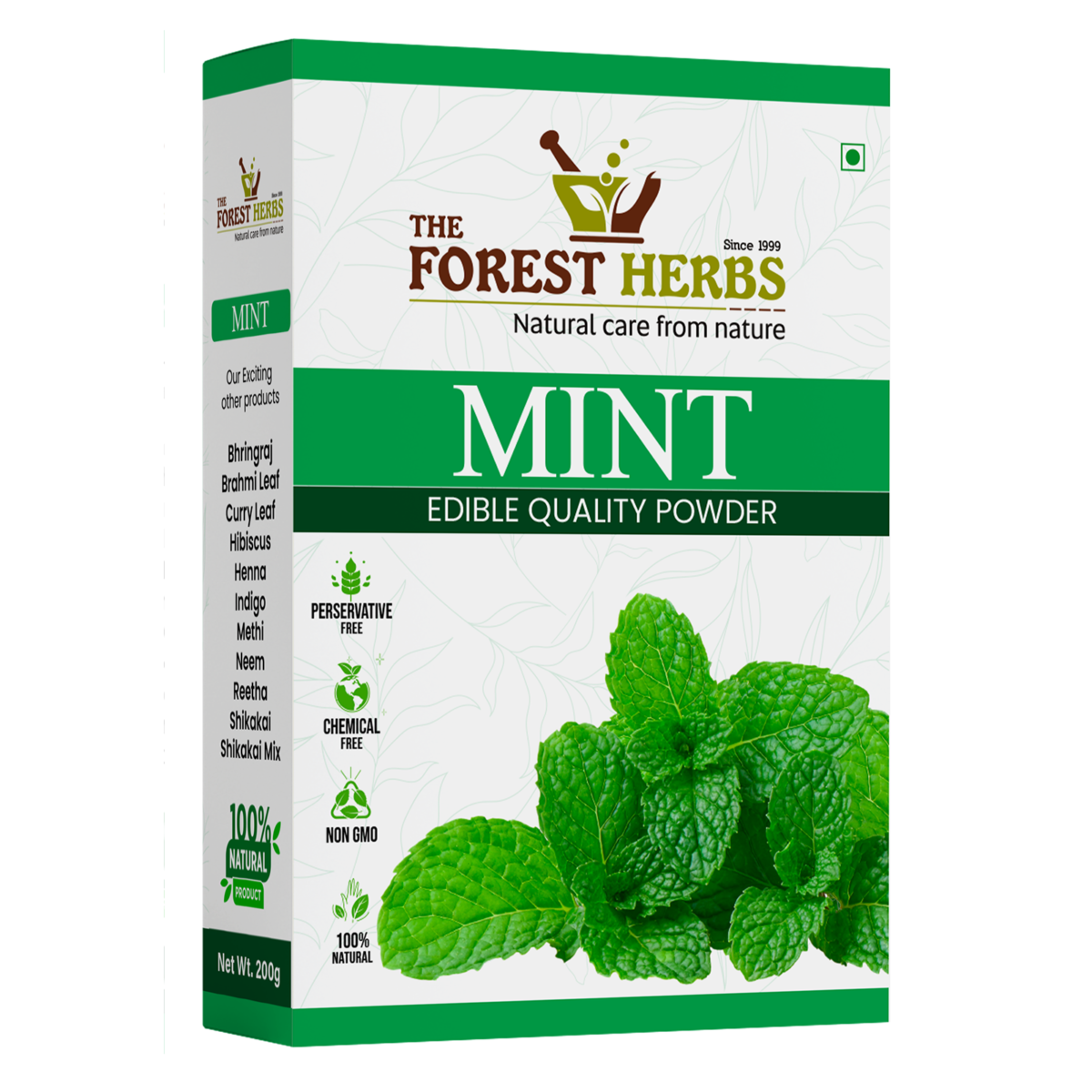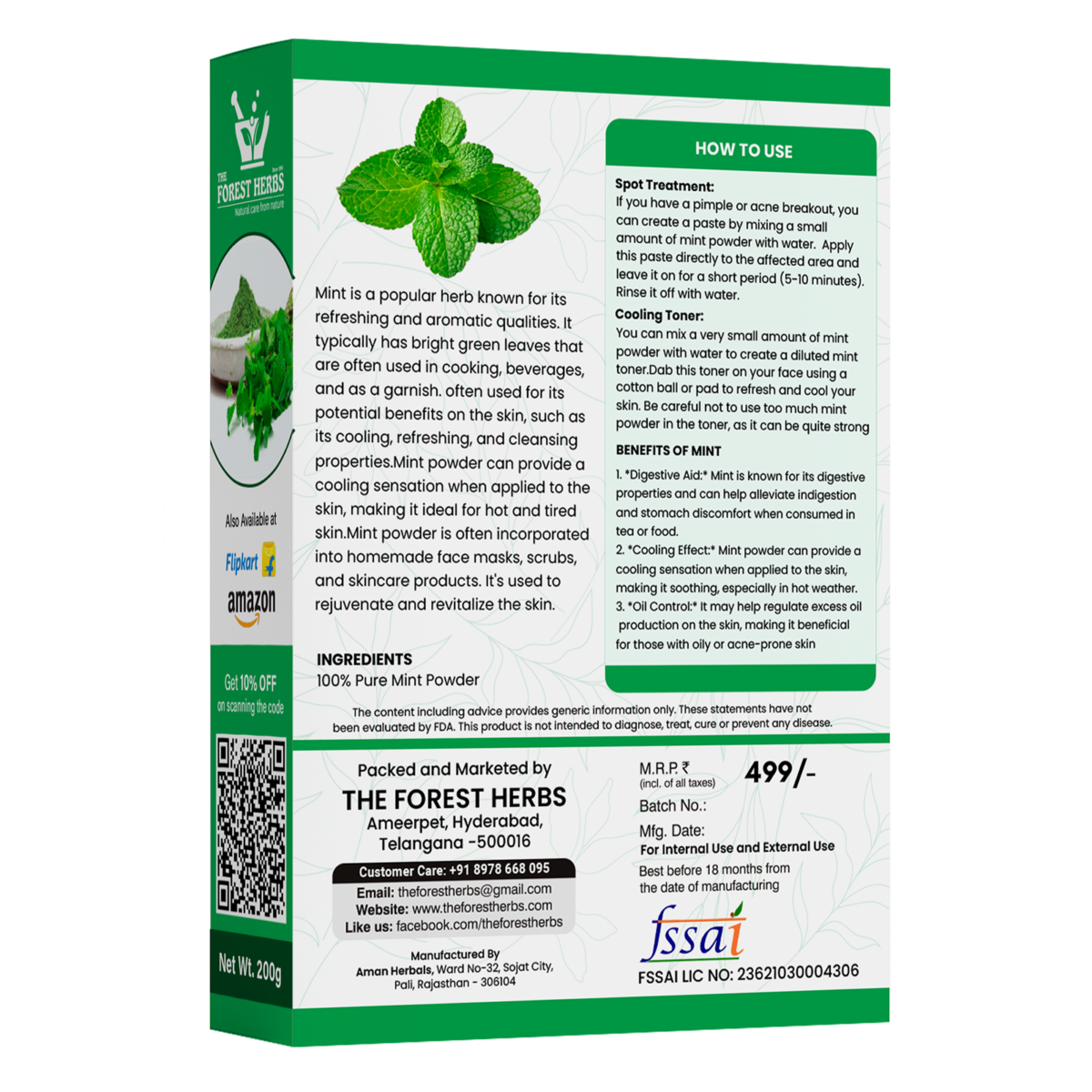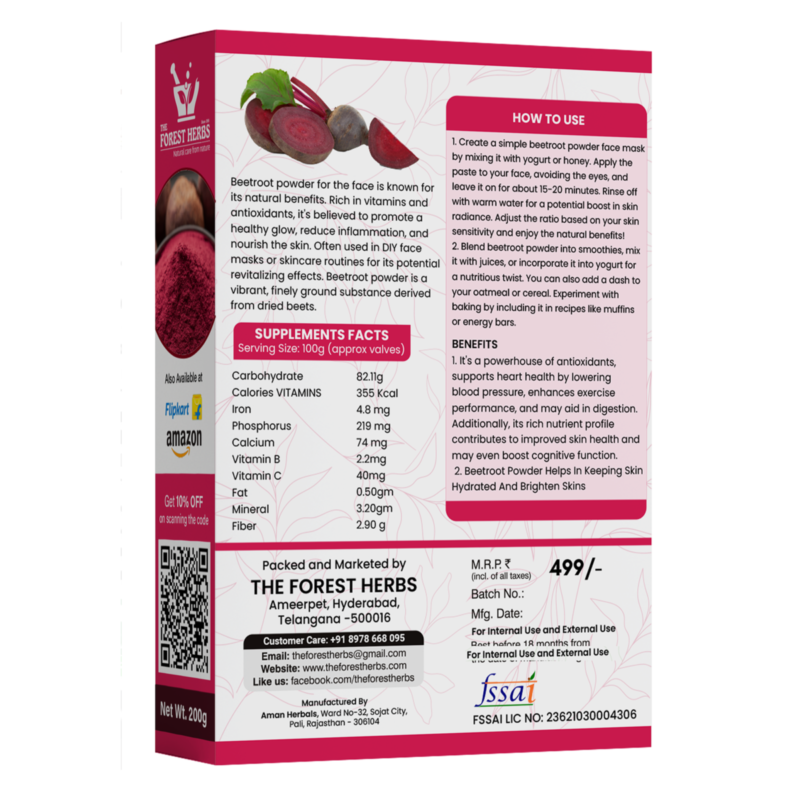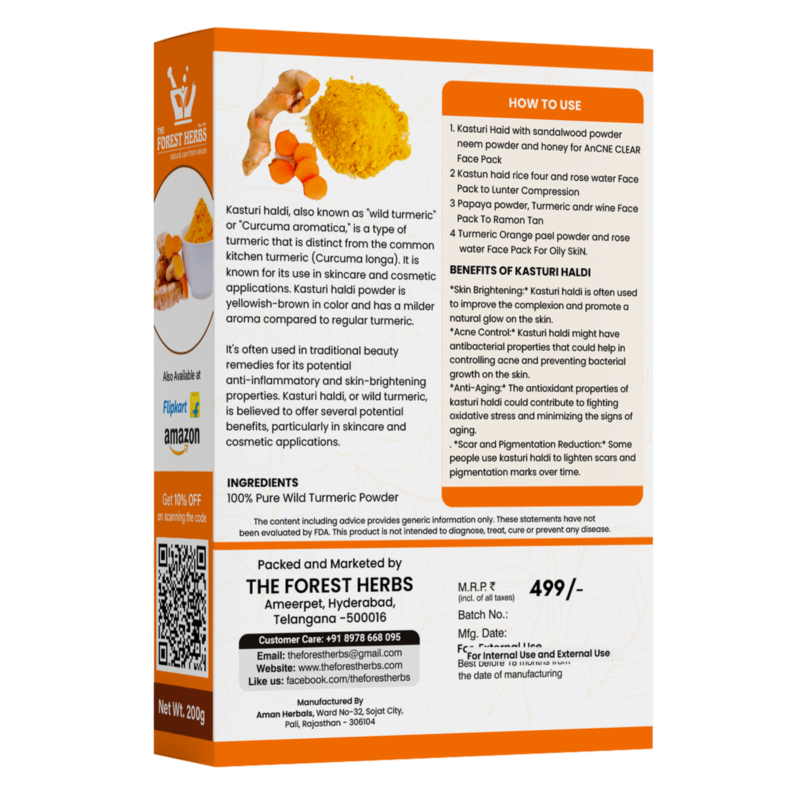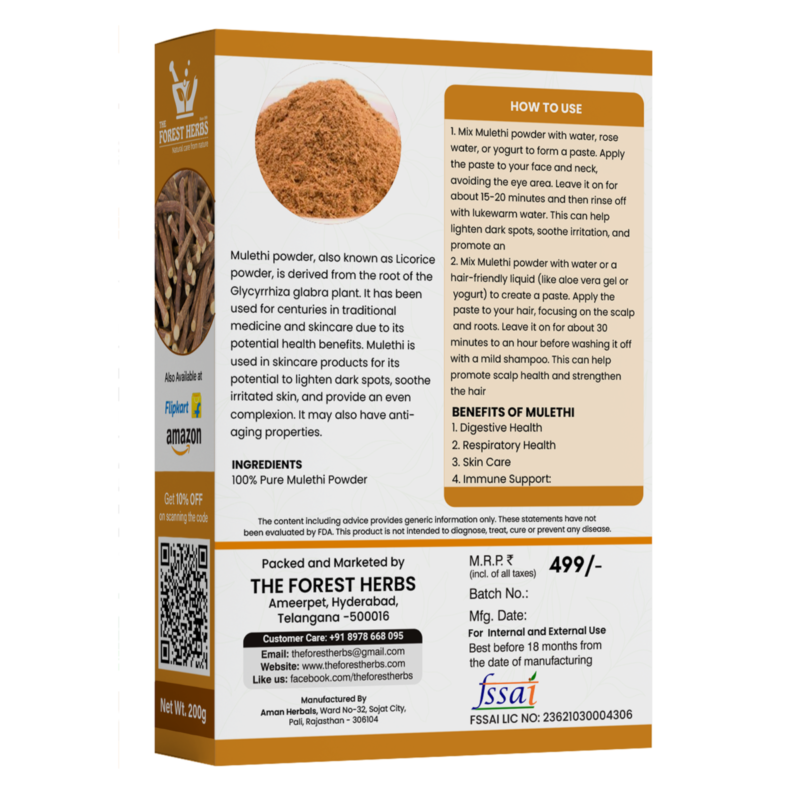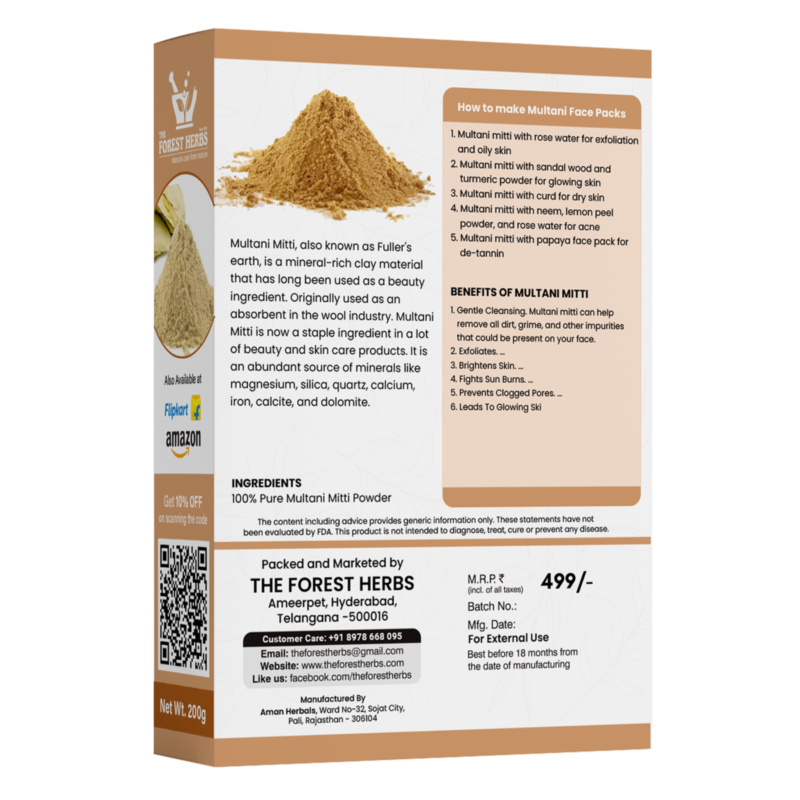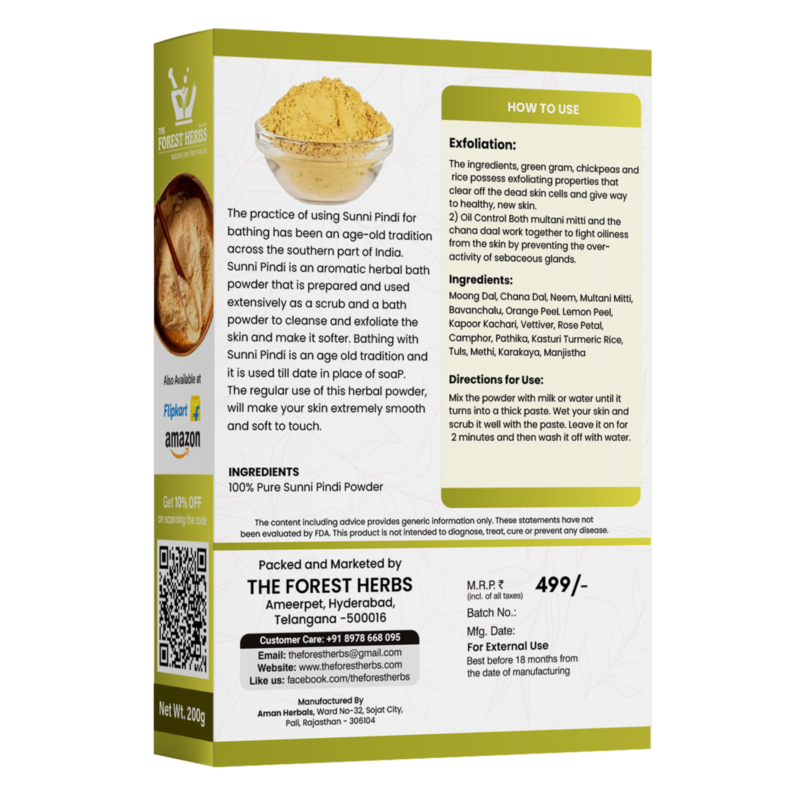Mint Powder
₹169.00
Free Cash On Delivery
MINT LEAF POWDER|PUDINA LEAF FOR SKIN FACE PACK 100%NATURAL NO PRESERVATIVES
10
People watching this product now!
411
Items sold in last 7 days
RELATED PRODUCTS
-33%
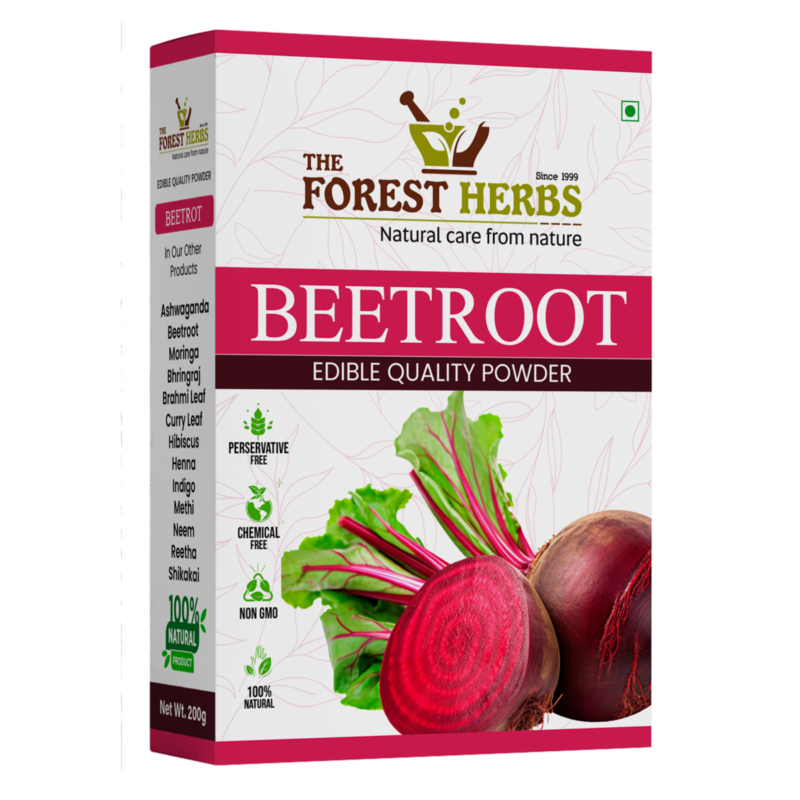
Select options
This product has multiple variants. The options may be chosen on the product page
Beetroot Powder for Face | Lips | Hair | Glowing & Shiny Skin | Drinking | Eating
Estimated delivery on 11 - 13 July, 2025
-27%
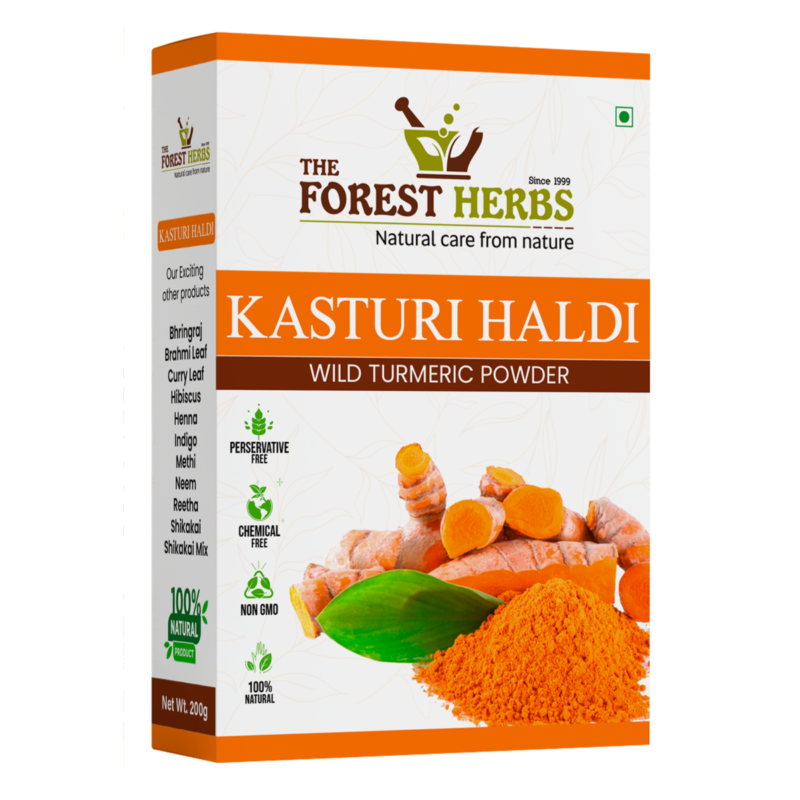
Select options
This product has multiple variants. The options may be chosen on the product page
Kasturi Haldi for Face and Skin – Wild Turmeric Powder for Skin Whitening
Estimated delivery on 11 - 13 July, 2025
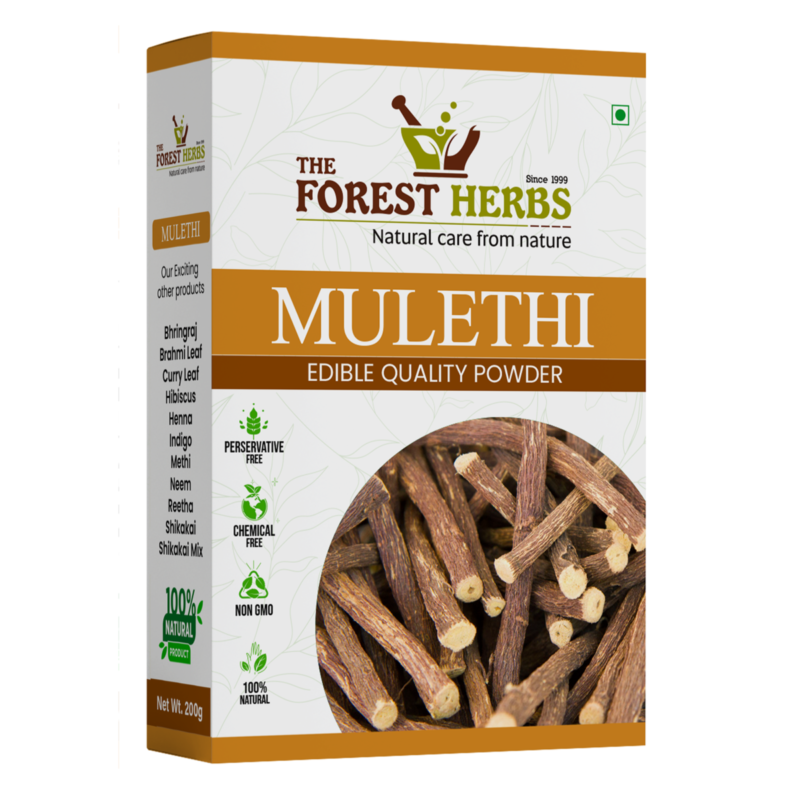
Select options
This product has multiple variants. The options may be chosen on the product page
Mulethi Powder (Licorice) for Skin, Hair and Eating
Estimated delivery on 11 - 13 July, 2025
₹265.00
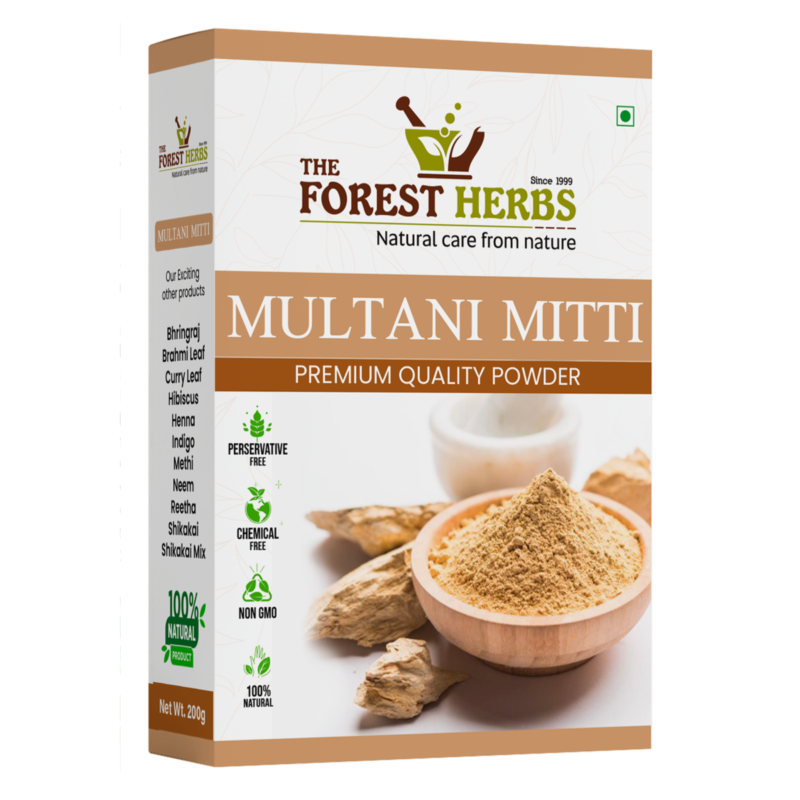
Select options
This product has multiple variants. The options may be chosen on the product page
Multani Mitti Powder for Skin and Hair
Estimated delivery on 11 - 13 July, 2025
₹175.00
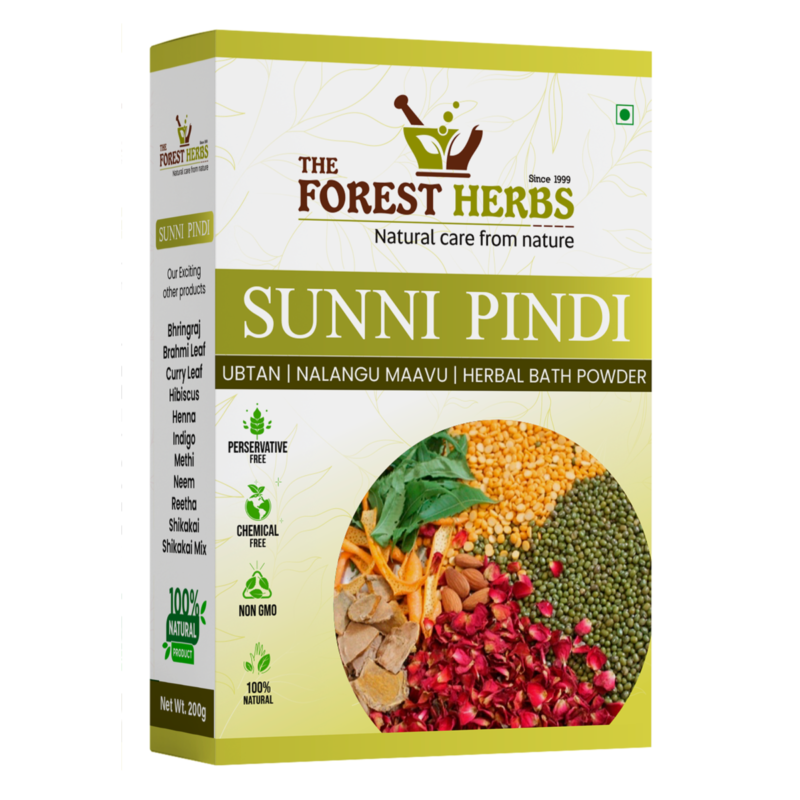
Select options
This product has multiple variants. The options may be chosen on the product page
Natural Sunnipindi Powder, Ubtan Powder – Herbal Bath powder – Nalangu Maavu
Rated 5.00 out of 5
Estimated delivery on 11 - 13 July, 2025
₹259.00 – ₹379.00

